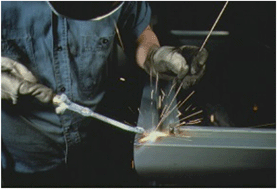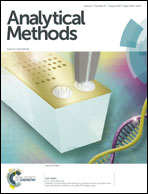Manganese speciation of laboratory-generated welding fumes
Abstract
The objective of this laboratory study was to identify and measure manganese (Mn) fractions in chamber-generated welding fumes (WF) and to evaluate and compare the results from a sequential extraction procedure for Mn fractions with that of an acid digestion procedure for measurement of total, elemental Mn. To prepare Mn-containing particulate matter from representative welding processes, a welding system was operated in short circuit gas metal arc welding (GMAW) mode using both stainless steel (SS) and mild carbon steel (MCS) and also with flux cored arc welding (FCAW) and shielded metal arc welding (SMAW) using MCS. Generated WF samples were collected onto polycarbonate filters before homogenization, weighing and storage in scintillation vials. The extraction procedure consisted of four sequential steps to measure various Mn fractions based upon selective solubility: (1) soluble Mn dissolved in 0.01 M ammonium acetate; (2) Mn(0,II) dissolved in 25% (v/v) acetic acid; (3) Mn(III,IV) dissolved in 0.5% (w/v) hydroxylamine hydrochloride in 25% (v/v) acetic acid; and (4) insoluble Mn extracted with concentrated hydrochloric and nitric acids. After sample treatment, the four fractions were analyzed for Mn by inductively coupled plasma-atomic emission spectroscopy (ICP-AES). WF from GMAW and FCAW showed similar distributions of Mn species, with the largest concentrations of Mn detected in the Mn(0,II) and insoluble Mn fractions. On the other hand, the majority of the Mn content of SMAW fume was detected as Mn(III,IV). Although the concentration of Mn measured from summation of the four sequential steps was statistically significantly different from that measured from the hot block dissolution method for total Mn, the difference is small enough to be of no practical importance for industrial hygiene air samples, and either method may be used for Mn measurement. The sequential extraction method provides valuable information about the oxidation state of Mn in samples and allows for comparison to results from previous work and from total Mn dissolution methods.


 Please wait while we load your content...
Please wait while we load your content...